Art
BEYOND GENDER TALKS
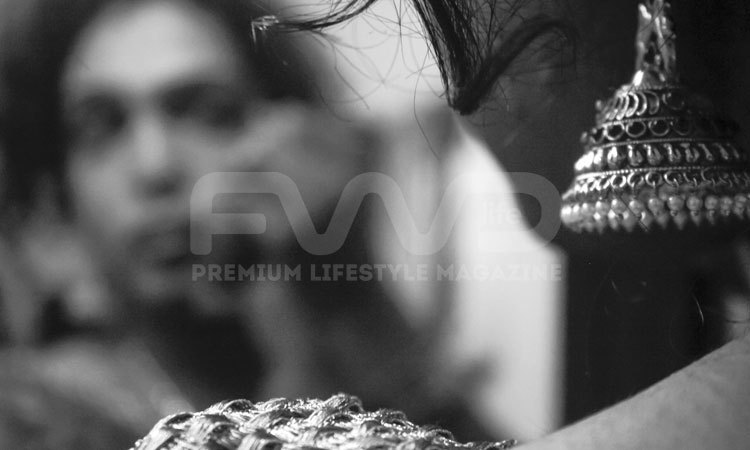
The work of art marvels us with perspectives led by the vanishing point. It leads the way, but cannot be seen, in such a way can the open-minded perspectives of gender be seen?
Words and Photographs by Reshma Teelar
Chemical imbalance,” the doctor said pensively. He looked at Einar Wegener with glacial eyes, and scribbled on his notepad – “schizophrenic.” Scrutinised unjustly, artist Einar escaped from the institution before he was declared mental. Against all odds, he attempted the first-ever male-tofemale sex reassignment surgery. Set in 1920s Copenhagen, “The Danish Girl” movie portrays the story of Einar, a pioneer in transgenderism. He became Lili Elbe and could no longer identify herself as a man. As she eloquently said, “ This is not my body. I have to let it go.”
A Look at It
Transgenderism isn’t a concept that isn’t so alien. But at the same time, it’s a confused one, whether it’s someone who’s homosexual or even a cross-dresser. Worldwide or in this hometown, artists have taken a moment to express how the ‘third gender’ feels. There’s still a sense of ostracism that comes with being a transgender. In a generation where we strive for the liberty of thoughts, gender still remains under the shadows of doubt. Because many a times, when one sees a transgender on a train one cannot deny that they sometimes recoil. A few questions lurk in the mind, is he a she? Like these thoughts are kept in the dark is also how many transgenders cloak their stories and voice.
Hearing the Hidden Voices
While Reshma Valentina was covering the story, she said the darkest nights was when she found them. Most of them were hesitant to talk and also scared to open up. What seemed odd, was that in a generation that celebrates open-mindedness, there’s still that discomfort of acceptance. Inspired by how a problem that was once considered unfathomable, has now become a condition easily curable with the power of medicine, we decided to look at how anguished minds dealt with the dosages. Here are five narrations by five individuals who fought against several odds in defence of their body and self-esteem – Sharon, Sweetie, Sheetal Pooja and Aami.
SHARON
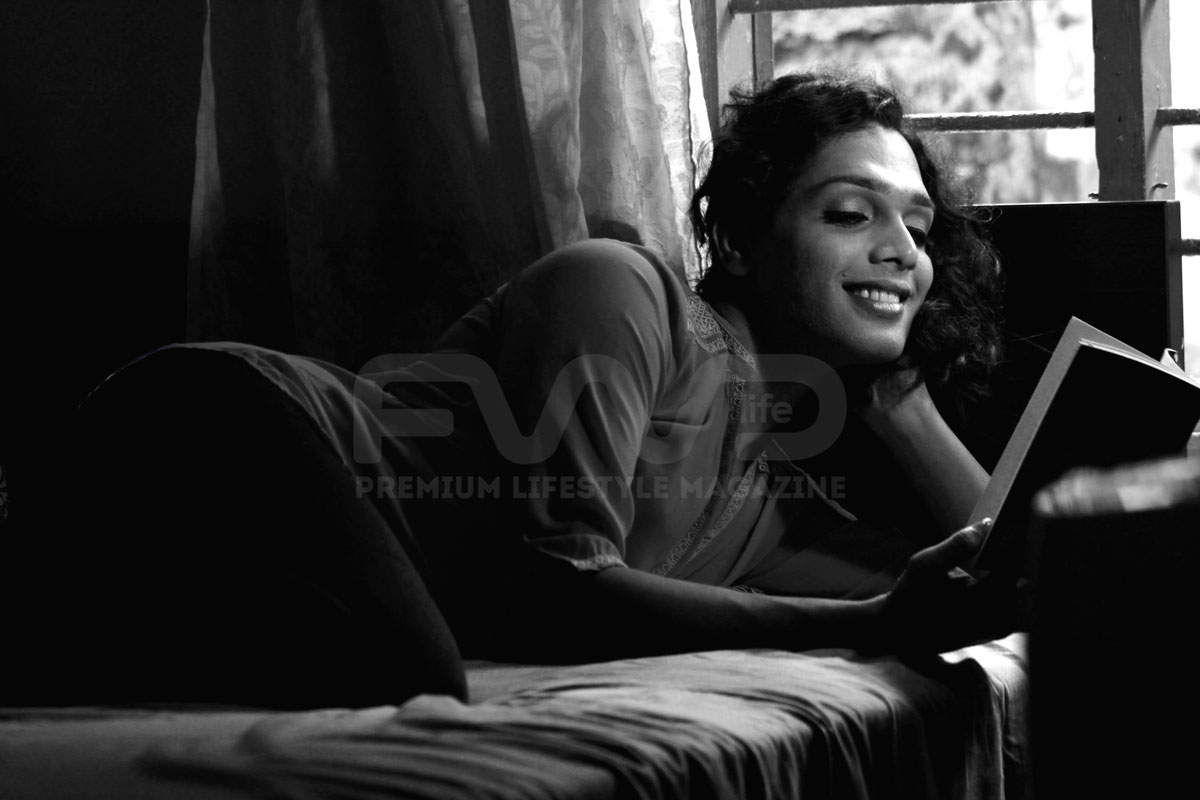
“I was very young when I started realising it myself. I was not me, I was another me. I was confused, but I had a strong urge to be the real one. I convinced myself, my family and others to believe in the real one. So here I am, a strong, independent, fearless ‘woman’, ready to take all the consequences of choosing my own gender. I am Sharon. People who have not yet accepted me, know me as Larwin, a 25-yearold mentally-confused person from Fort Kochi. I was given my new name by those who really ‘know’ me. All I wanted in my life was to be accepted by people. But I was abused, by all means, discouraged by everyone and crushed to the ground, left for dead.
A winner, however, doesn’t know when to stop. I worked hard with all my might and will. I have worked as a receptionist, accountant, sales girl and a waitress; starting from being a housekeeping boy. In the meanwhile I began modelling as a part time career, which eventually resulted in me being an actress now. In the fashion industry, I was asked several times to ‘compromise’, every time I was offered an opportunity. Due to this, I have faced quite a lot of problems in my career because my mind or body never surrendered for anything or anyone other than me.My first love tried to cage me and take away my dreams, the society tried to degrade me, my family tried to change me, so I left all that behind. When I was diagnosed with jaundice, I remember shaving my beautiful hair, as my family refused to take me to a hospital, for looking feminine. At times, I had no choice other than to literally act in my real life to survive. I give and take respect. I admire people who treat others for who they really are. I request everyone, not just the ‘third gender’, to be brave and stand up for yourself.
SHEETHAL
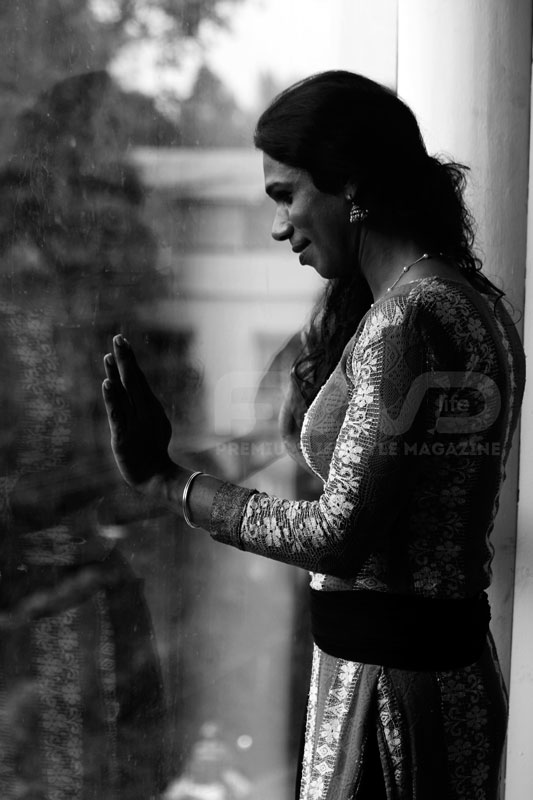
My passion was to become a dancer and a fashion designer, which my family never accepted. I wanted to lead a life I dreamed of, but society didn’t accept that. So I didn’t accept their ways of thinking. Most of us are abused right at home, where we are supposed to be safe. A whole community suffers because the society is not pleased with what they ‘see’. I believe we are being tortured because we have accepted ourselves as women. About sex workers, they work with the last thing that’s left with them.They are scarifying their life, love and body to survive and they take it as their job for living knowing that it wouldn’t last for long. And strangely, we face sarcasm for this from a society who thanks us for reducing sexual harassment! Why sacrifice one gender for keeping another gender safe? If we were treated as normal beings, we wouldn’t have wasted so many lives.”
SWEETIE
I do not want to reveal my old name because when I say that, a lot of memories flash through my mind – none any good. I had a lot of dreams, but it never happened. I think it has become an obvious thing for a transgender to never get what they dreamed of. We have the strength of a man and mind of a woman. We have the best of both genders. If given an opportunity we can be anything, but unfortunately we don’t get any. One of my friends had to turn down a beauty contest for women because a person knew that she was a transgender. The society should understand, not every transgender in town is a sex worker.
Akai Pathmashali, Sheethal, Surya, they all fight for us. The police do not do anything to them because they are famous. They should understand that we have a lot of problems to handle in our own lives. Men cheat us with love because we are vulnerable towards it. There are also men who would be genuinely sweet to us, but police have to ruin that too. They come to us, make an issue and establish that these men came to us for sex. So, they leave. The struggles that we went through to get a policy in Kerala, was immense and we were relieved till we understood nothing has changed. This society which calls us sluts and prostitutes doesn’t realise that they made us this way. If they had accepted us, we would have been also in a good position. We do not have to be married or bear a child to be a woman, it’s the determination to be something which makes everyone what they are.
AAMI
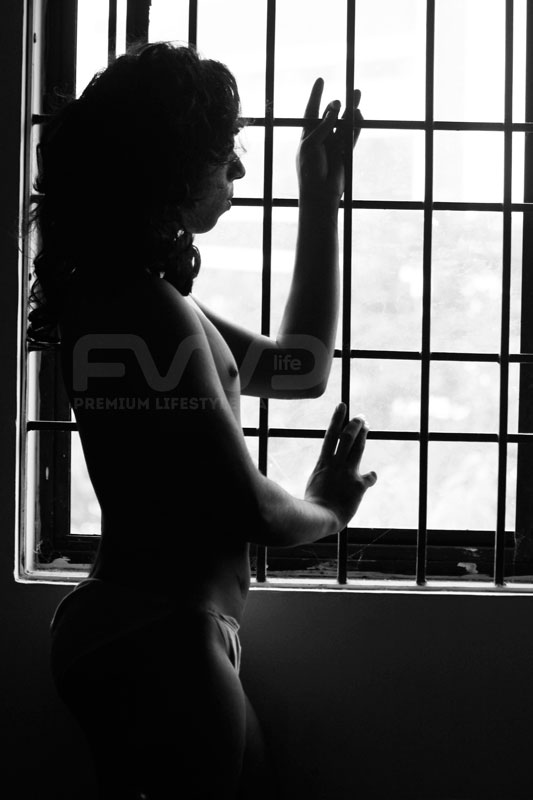
My life is just how the usual cliché goes. I was kicked out from my family when I tried to explain myself. They sent me for counselling, made me take medicines, took me to a mental hospital but nothing worked, because this is not a disease, it a realisation. I asked for a surgery. I could have used the partitioned amount from my family to do the surgery. They understood that it was a genuine request and they have to give it, so the other family members convinced my mother and made me leave the home so that they could take my partition amount. My mother always supported me, but I lost her as well. Everybody wants to know how I have sex, whether I have a vagina, how many men I take a day. It’s very hard to do even the basic things in this society like, buying things from a shop, having food from restaurants, going to a hospital, hanging out with friends etc. When we are seen in public, police ask us for ID cards.
We went through innumerable occasions of abuses, assaults and harassments each and every day. The only time I enjoy in my life is when we conduct ‘Road Shows’. It’s the only time we can be ourselves in the society and where the police doesn’t lock us up. Once somebody stole my phone, so I went to the police station to file a complaint, but all they wanted to know was the number of men I slept with that night, I was not a sex worker then. I was devastated by this. I had to call everyone I knew to get me out of there. The media came to us for an article, they seemed like sweet people, so we disclosed everything about us, and the next day, news papers called us ‘sluts who enjoy their job’. I don’t know what is all the hype about being a man, I choose to be a woman. I had a lot of dreams when I started fighting for my rights, but now I just need few basic things, a job, a home, and a public toilet.
POOJA
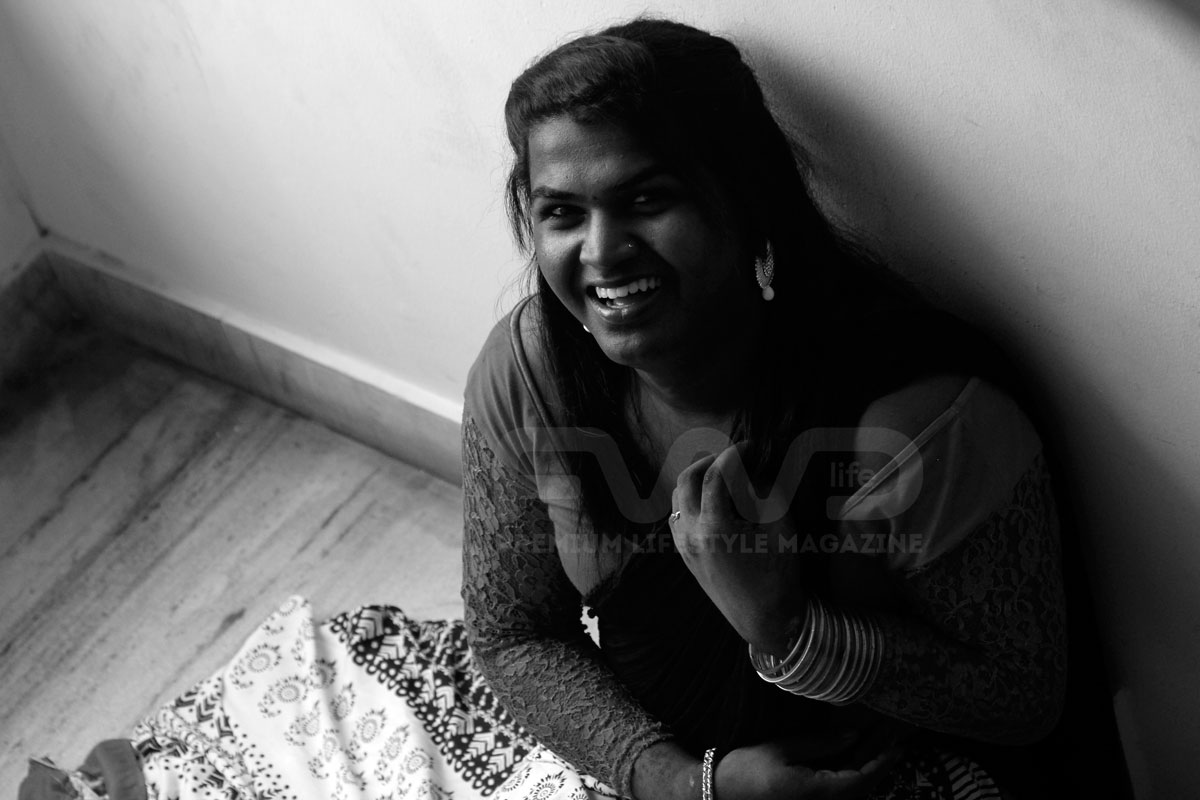
I studied in a co-ed school, which was the most hellish years of my life. My classmates were insensitive and would often abuse me physically and emotionally.I wanted to study like everyone else, get a job, lead a normal life; but everything changed when I realised that I was in the wrong body, that lead me to do big mistakes … things I thought I’d never do for a living. I ran away from my family who only believed in the two conventional genders. They may admire a transgender actor or comedian or starlet on television, but would never accept someone like that in their own family. Every night, our body and our being are used. Strangely something happens during daylight, because when it breaks, we become untouchables to them. Once, a man kicked me out of the car when he got to know that I was not a ‘girl’.
My friends and I were once thrown into a waste-dumping yard by the police in Kalamassery because we apparently belonged there and that if we found a way to get out, it would be too late to **** someone. These were their own words. Married men come to us. They say their wives do not turn them on. Once, there was a man who came to me because he wanted sperms to surgically inject to his wife as he could never get turned on and having a child was a problem. I helped him anyway, although I was still labelled a “slut”. They say that we will get jobs at Kochi Metro, but for that we require a minimum qualification. Now I don’t need everyone to support us. I just need people to leave us alone.
Art
Navratri 2024: Celebrating the Nine Colours and Their Significance
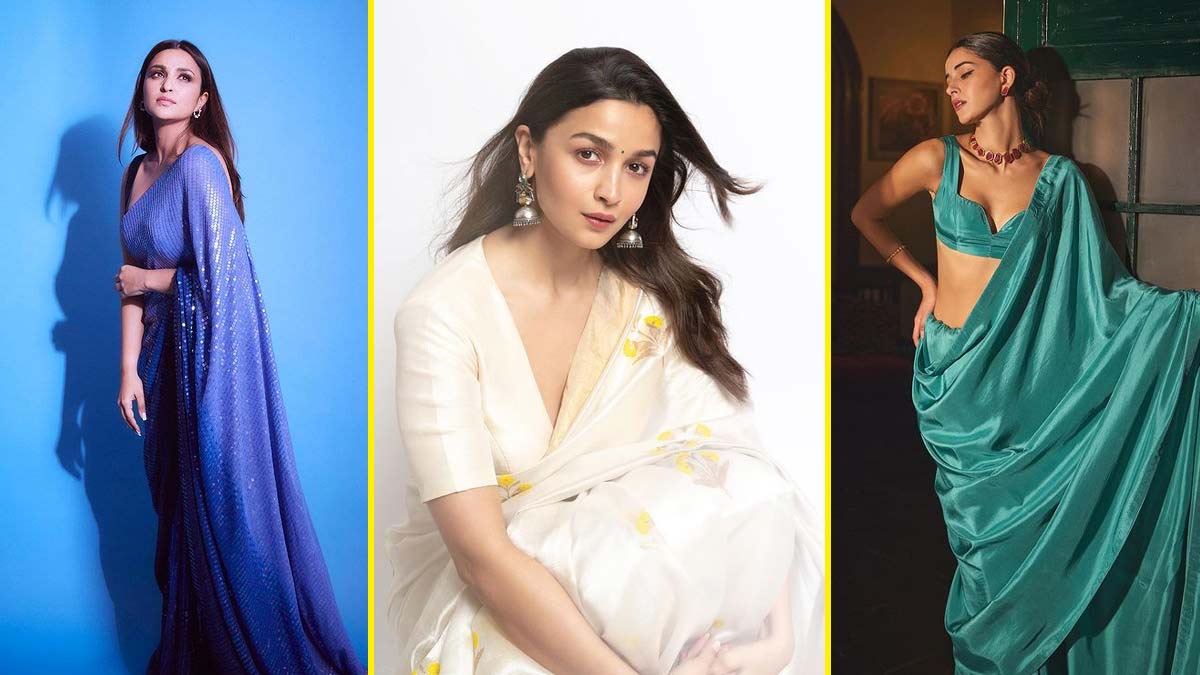
Navratri, the festival that spans nine nights, is one of the most auspicious and widely celebrated festivals in India. Dedicated to the worship of Goddess Durga in her nine forms, each day of Navratri holds special significance, marked by a distinct color that carries deep spiritual and cultural meaning. As we prepare for Navratri 2024, let’s explore the nine colors associated with each day, their significance, and how they inspire devotion, positivity, and harmony.
Day 1: Yellow
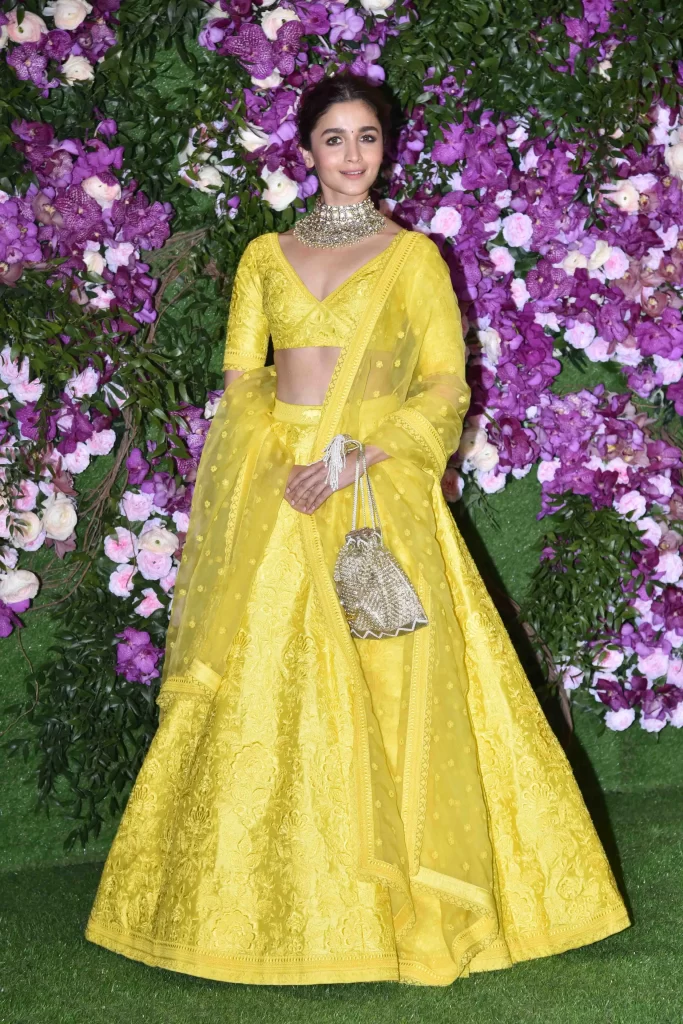
On Thursday, embrace the uplifting energy of yellow as you celebrate Navratri with optimism and joy. This warm and cheerful color symbolizes happiness and radiates positivity, keeping you in high spirits throughout the day.
Day 2: Green

On Friday, wear green, a color that represents nature, growth, and harmony. It evokes a sense of peace and serenity, while also symbolizing new beginnings. Let the vibrant energy of green invite tranquility and the blessings of the Goddess into your life.
Day 3: Grey

Saturday calls for the subtle sophistication of grey. This balanced color keeps you grounded and calm, symbolizing composure and understated elegance. It’s perfect for those who want to participate in Navratri with grace while making a refined style statement.
Day 4: Orange

On Sunday, adorn yourself in the vibrant hue of orange. This color embodies warmth, exuberance, and positivity. Wearing orange during Navratri invokes an upbeat energy, bringing vitality and a lively spirit to your celebrations.
Day 5: White

Start your Monday with the purity and serenity of white. Associated with innocence and spiritual clarity, this color invites inner peace and helps you connect with the divine blessings of the Goddess, offering a sense of security and calm.
Day 6: Red

On Tuesday, red takes center stage, symbolizing passion, love, and strength. As one of the most auspicious colors, red is often offered to the Goddess in the form of a Chunri. Wearing red fills you with energy, vigor, and the vibrant spirit of Navratri.
Day 7: Royal Blue

Wednesday’s color is royal blue, representing elegance, richness, and tranquility. This deep, vivid shade of blue exudes confidence and sophistication, making it an ideal choice for those who want to celebrate Navratri with style and grace.
Day 8: Pink

On Thursday, don the charming hue of pink, a symbol of universal love, affection, and harmony. Pink is a color that adds a soft touch of warmth and approachability, making it perfect for creating a loving and joyful atmosphere during the festivities.
Day 9: Purple

On the final day of Navratri, purple takes the spotlight. Associated with luxury, nobility, and grandeur, purple invites opulence into your life. Wearing this regal color while worshipping Navdurga bestows blessings of prosperity and richness, making it the perfect way to end your Navratri celebrations.
Art
Exploring the Rich Tapestry of Indian Art: A Journey Through State-Wise Traditional Paintings

India’s artistic heritage is a vibrant mosaic, reflecting the diverse cultural traditions of its states. Each region has its unique style of painting, with techniques and themes passed down through generations. Let’s delve into some of the most iconic traditional paintings from different states of India.
1. Madhubani Painting (Bihar)

Originating from the Mithila region of Bihar, Madhubani painting is known for its intricate patterns, bold colors, and themes inspired by nature, mythology, and folk tales. Traditionally, these paintings were done on mud walls, but now they are also created on cloth, handmade paper, and canvas.
Distinctive Features: Use of natural dyes, double outlines, geometrical patterns, and motifs like flowers, animals, and deities.
2. Pattachitra (Odisha and West Bengal)

umaid art
Pattachitra, meaning ‘cloth painting,’ is an ancient art form from Odisha and West Bengal. These paintings depict mythological narratives, especially around Lord Jagannath, and are characterized by their intricate details and mythological themes.
Distinctive Features: Fine detailing, elaborate borders, vibrant use of colors, and the use of natural ingredients for dyes.
3. Warli Art (Maharashtra)
Warli art is a form of tribal painting from Maharashtra, traditionally done by the Warli tribe. It primarily uses white pigment on a mud base to depict daily activities, such as farming, hunting, and dancing, in a minimalistic yet expressive manner.
Distinctive Features: Simple geometric shapes like circles, triangles, and squares, which represent different elements of nature and human life.
4. Tanjore Painting (Tamil Nadu)

Tanjore (or Thanjavur) paintings, originating from Tamil Nadu, are known for their rich colors, surface richness, compact composition, and use of gold foil. They often depict Hindu gods and goddesses, with a focus on Lord Krishna and other deities.
Distinctive Features: Use of vibrant colors, gold leaf, and inlay work with semi-precious stones on wooden boards.
5. Pichwai Painting (Rajasthan)

Pichwai paintings, hailing from Rajasthan, are intricate paintings that portray the life of Lord Krishna, especially in the Nathdwara temple. These paintings are traditionally done on cloth and used as wall hangings behind the deity in temples.
Distinctive Features: Detailed depiction of Lord Krishna’s life, use of bright colors, and the portrayal of various scenes from the Bhagavad Purana.
6. Phad Painting (Rajasthan)
Phad painting is a narrative scroll painting from Rajasthan, where the stories of folk deities like Pabuji and Devnarayan are depicted. The paintings are done on long pieces of cloth and are used in religious storytelling.
Distinctive Features: Bold lines, earthy colors, and the depiction of deities and their exploits.
7. Kalamkari (Andhra Pradesh)

Kalamkari, literally meaning ‘pen work,’ is an art form from Andhra Pradesh that involves hand-painting or block printing on fabric. The themes are largely mythological, with stories from the Ramayana and Mahabharata being common subjects.
Distinctive Features: Intricate handwork, natural dyes, and a distinctive color palette dominated by earthy tones.
8. Pithora Painting (Gujarat and Madhya Pradesh)

Pithora paintings, created by the Rathwa and Bhilala tribes of Gujarat and Madhya Pradesh, are done on the walls of their houses. These paintings are part of a ritual to invite the gods and ensure prosperity and happiness.
Distinctive Features: Vibrant colors, ritualistic significance, and the depiction of gods, animals, and scenes from daily life.
9. Chitrakathi Painting (Maharashtra)

Chitrakathi is a traditional art form from the Maharashtra-Karnataka border, where paintings are used as visual aids in storytelling. These paintings often accompany performances that narrate stories from epics like the Ramayana and Mahabharata.
Distinctive Features: Simple yet expressive figures, use of natural colors, and the narrative style.
10. Saura Art (Odisha)

Saura art is a form of mural painting by the Saura tribe of Odisha. It is similar to Warli art but has its unique elements, depicting the tribe’s daily activities, rituals, and deities.
Distinctive Features: Monochrome palette, linear style, and the depiction of nature and community life.
The diverse painting styles of India offer a glimpse into the country’s rich cultural heritage. Each state’s art form is a testament to the creativity and traditions that have been nurtured for centuries. By exploring these traditional paintings, we not only appreciate their beauty but also connect with the stories and values that have shaped India’s cultural landscape.
Art
The Microscopic Handbag Phenomenon: MSCHF’s Bold and Tiny Louis Vuitton Creation

In the realm of fashion, innovation knows no bounds, and the boundary-pushing collective known as MSCHF constantly proves this point. Their latest creation, a microscopic handbag inspired by Louis Vuitton, has taken the industry by storm, captivating fashion enthusiasts around the globe. Breaking free from traditional size constraints and redefining functionality, this miniature accessory has ignited curiosity and sparked a sensation. Join us as we delve into the extraordinary world of MSCHF’s microscopic handbag, exploring its origins, unique features, and the remarkable buzz it has generated.
MSCHF, renowned for their unconventional and thought-provoking projects, partnered with luxury fashion house Louis Vuitton to unleash a game-changing collaboration. Together, they birthed a surprising twist on the classic handbag, pushing the boundaries of scale to an entirely new level. The microscopic handbag challenges the norm and introduces an audacious new concept.

Measuring a mere 1.5 inches in height, the microscopic handbag is a masterpiece of miniaturization. This whimsical accessory captures the essence of a traditional Louis Vuitton purse, complete with the iconic monogram pattern and signature leather trim. Despite its minuscule size, it exudes luxury and craftsmanship, embodying the brand’s prestige and aesthetic.
The MSCHF microscopic handbag represents a captivating fusion of fashion and art. It blurs the lines between these creative realms and prompts us to question our perception of material possessions. Through this micro-sized wonder, MSCHF challenges our understanding of fashion’s role in society and invites us to contemplate the value we attach to material goods.
Since its introduction, the microscopic handbag has caused a viral sensation across social media platforms. Its diminutive size and unexpected collaboration have captivated fashion enthusiasts and sparked intriguing discussions. This extraordinary creation serves as a catalyst for conversations about fashion trends, the power of satire in design, and the evolving landscape of the industry. Once again, MSCHF has successfully captured the attention of the fashion world, pushing boundaries and reshaping our perception of what is considered fashionable.
MSCHF has cemented its legacy as a disruptive force in the fashion and art realms. Their innovative and thought-provoking projects consistently challenge norms and captivate audiences. With the microscopic handbag, they have once again showcased their ability to generate intrigue, spark conversations, and inspire wonder within the industry.
In conclusion, the MSCHF microscopic handbag stands as a testament to bold creativity and audacity in the world of fashion. Its tiny size and unexpected collaboration with Louis Vuitton have shattered conventional handbag design and ignited curiosity on a global scale. This extraordinary creation not only exemplifies the artistry and innovation of MSCHF but also invites us to reflect on the ever-evolving nature of fashion and its profound impact on our collective imagination. As we eagerly anticipate MSCHF’s next groundbreaking venture, one thing is certain: they will continue to redefine the boundaries of what is possible in the world of fashion.
-

 Style11 months ago
Style11 months agoBridal Guide : Best Looks of Radhika Merchant Ambani
-

 Fashion1 year ago
Fashion1 year agoMost Discussed Ajrakh Saree of Alia Bhatt
-

 Entertainment1 year ago
Entertainment1 year agoThe Most Stylish Guests of Bhagya Suresh Reception
-

 Entertainment1 year ago
Entertainment1 year agoBridal Bliss : All Bridal Looks of Swasika Vijay
-

 Movies1 year ago
Movies1 year agoA Nostalgic Journey Through Love &Cinema : Best Bollywood Romantic 90s Movies
-

 Fashion1 year ago
Fashion1 year agoMajor Denim Trends You Need To Know in 2024
-

 AD8 months ago
AD8 months agoPopular Curtain Fabrics to Consider for Your Home
-

 Events9 months ago
Events9 months agoBest of Fashion Looks : Diya Krishna Wedding








































